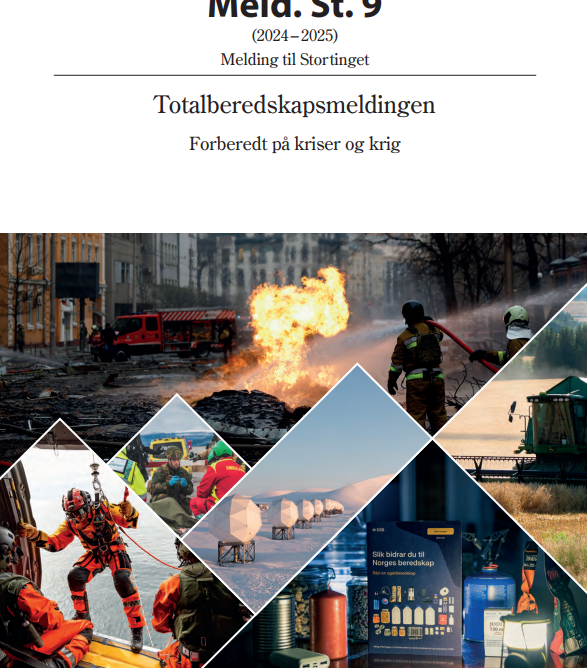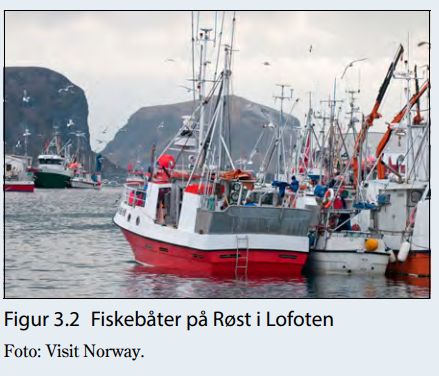Arne O. Holm says Total Preparedness: When Regional Policy Overrules Security Policy in the North

The new Norwegian white paper on total preparedness. (Screenshot)
Comment: Expensive and inadequate. That is how the Norwegian Minister of Health, Jan Christian Vestre, described his meeting with the Eastern Finnmark infrastructure the other day. Yet, that is only one of the challenges not addressed in the total preparedness white paper recently presented by his own government.
This is a comment written by a member of the editorial staff. The comment expresses the writer's opinions.
This is noteworthy for several reasons.
Here are a few of those.
As Minister of Trade and Industry, Vestre has visited the Northern Norwegian county of Finnmark more often than most politicians but has failed to notice the great distances and poor infrastructure.
Grasping the severity
In September last year, the Armed Forces invited the President of the Parliament, Masud Gharahkhani, on a boat ride on the Pasvik River. There, on the border with Russia, he also grasped the severity, he told IFinnmark. "In the end, it is the people on the border who defend the country," he added.
I'll backtrack even further, past testimonies and reality checks among traveling politicians.
A near wasteful circulation of a report, seen from the North.
In June 2023, Harald Sunde, Chair of the Total Preparedness Commission, presented the commission's conclusion. Using a broad-brush approach, the commission painted an image of a nation with very differing preparedness challenges.
The chapter on the High North, particularly Finnmark and Troms, was extensive, not to mention dramatic. After a careful but precise introduction, the commission established that the "challenges in the North stand out compared to other parts of the country."
Long list
Then, the commission listed climate, distances, demography, dispersed settlement, aging, centralization, migration, Russian neighborship, and the security policy situation in a long chapter on the High North. According to the commission, all these areas are challenges that change character when one moves from south to north.
The academically heavy team almost hammered in the message: Extraordinary challenges demand extraordinary solutions.

The white paper on total preparedness isn't exactly littered with illustrations, not least from the North. But finally, I found a photo of a fishing vessel in Røst, Lofoten Islands. (Screenshot from the white paper, credited Visit Norway)
Henceforth, the commission embarked on a long journey between ministers and ministries while Vestre and other government members continued on an expedition elsewhere in the country.
Waste
From a northern perspective, this has been a close to wasteful circulation of a report that the commission itself named "This is serious." After recycling through the government system, the new white paper completely ignores the differences between the North and the South, despite claims that it is based on the commission's conclusions.
The white paper concerns 'the whole of Norway,' the slogan that has caused the Center Party to drop in all polls and forge more or less absurd discussions in NRK's Dagsnytt 18 on whether it is okay to joke about the snow that falls in Oslo.
The descriptions from both the commission and the government are more or less the same, but they are diluted by a government that insists that the whole of Norway must be seen through the same glasses. Even careful admissions of differences remain fruitless in pursuing more diversified measures.
Extraordinary challenges require extraordinary solutions.
"Settlement, activity, and vibrant local communities in the entire country are strategically significant to Norway, particularly in the North."
So what, I ask.
Regional policy
The difference between the commission and the white paper is that the term "particularly in the North" bears no consequence when it is to be translated into policy.
To see the nation as a uniform unit, the white paper emphasizes that the "government's aims for good local communities in the North build upon a clear regional policy justification" before carefully adding that "strong local communities in the north are (also) important for strengthened Norwegian resilience."
But first and foremost, regional policy measures on the border with Russia.
Regional policy on the border with Russia.
A member of the Total Preparedness Commission, Professor Odd Jarl Borch at Nord University, reacts to the white paper.
In an HNN op-ed, he writes, "In the security policy crisis that we now see the outlines of, the northernmost regions are the most at risk. The white paper should have granted more space and priority to an investment in High North preparedness."
Together with the Defense Commission, the commission gave national politicians from all political parties all the justification they needed for a policy to strengthen the High North in the nation's best interest.
The chase for Greenland, and tentatively also Svalbard, should alone be an argument for overhauling preparedness in the north with security policy, not district policy, measures.
That opportunity was wasted in white paper number 9, 2024-2025, the Total Preparedness White Paper.
Yet, the white paper has scarcely generated debate. That's what happens when the national agenda is set in a part of Norway where filling a couple of extra water jugs and storing a package of dry food is enough to fulfill the national preparedness needs.



